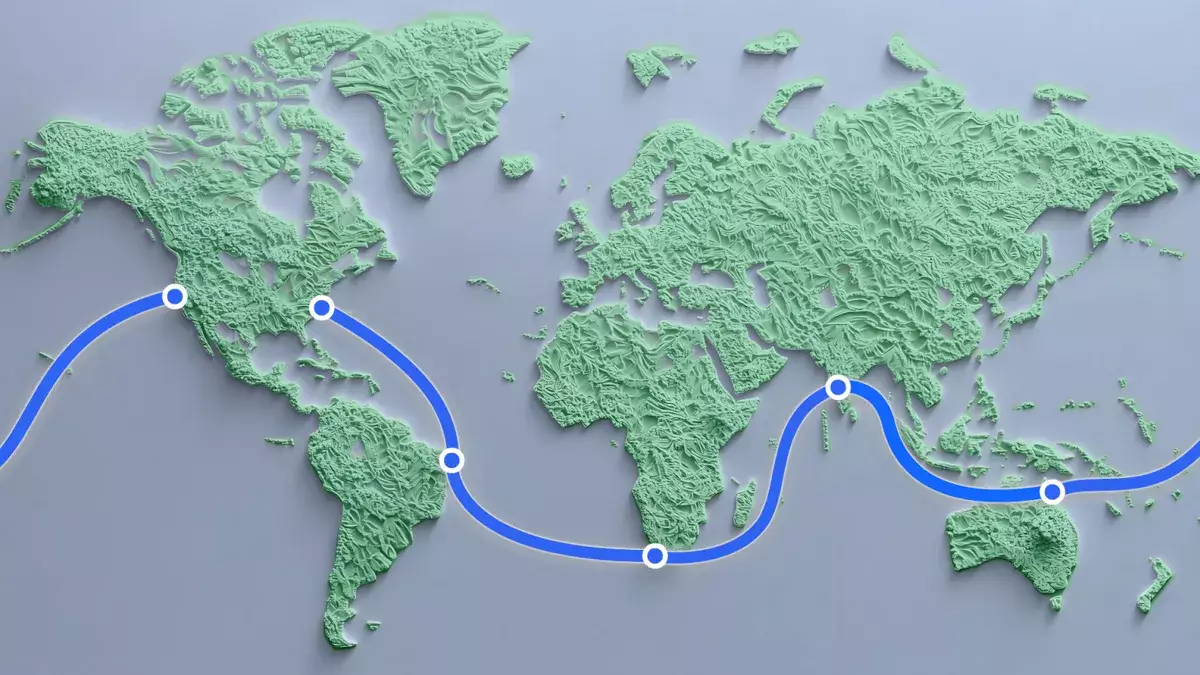In 2025, the landscape of technology is undeniably dominated by wireless communications. However, behind the scenes of this seemingly intangible realm lies an intricate web of physical infrastructure that keeps our digital world connected. It’s estimated that over 98% of global internet traffic relies on long undersea cables. Among the most ambitious of these developments is Meta’s proposed undersea cable project, dubbed “Project Waterworth.” This monumental undertaking aims to construct a cable that surpasses the Earth’s circumference, extending up to four miles beneath the ocean’s surface. But what does this mean for the future of global connectivity?
At a glance, the concept of laying a gigantic cable spanning 31,000 miles (50,000 kilometers) might appear to contradict the modern trend of wireless communication. However, the reality is that such cables don’t simply stretch in a linear trajectory; they traverse complex underwater terrains and geographic markers. In a striking statement on their official blog, Meta outlines how Project Waterworth connects critical regions, impacting connectivity from the U.S. to countries like South Africa, Brazil, India, and ultimately landing in Australia.
The cable’s route is noteworthy: starting on the U.S. East Coast, it moves south to Brazil before navigating across the Atlantic and around the southern tip of Africa, eventually reaching India and proceeding to Australia. The strategic placement of this cable is designed to maximize connectivity and reliability, serving as a vital artery for the transmission of data between these diverse global locations.
What’s particularly striking about Project Waterworth is not just its ambition in length but its innovative engineering. Proposed to be laid at depths reaching 7 kilometers, or approximately 4 miles, this undersea cable is designed with resilience against the myriad dangers that lie beneath the ocean’s surface. According to Meta, advanced engineering strategies are in play to enhance the durability and speed of the cable’s deployment.
In an era increasingly driven by artificial intelligence (AI) and high-speed data transfer, this cable is positioned as a critical infrastructure project. Meta describes it as a “multi-billion dollar, multi-year investment” intended to support the burgeoning demands of AI technology and enhance the reliability of the digital infrastructure upon which modern society relies.
While such projects are commendable for their potential to revolutionize global internet connectivity, it’s essential to acknowledge Meta’s controversial reputation, especially concerning how it manages its platforms. The company’s PR efforts have faced scrutiny, particularly following recent decisions by CEO Mark Zuckerberg regarding content moderation. The shift from employing professional fact-checkers to relying on “community notes” raises questions about the credibility of information on their platforms—a key issue given Meta’s significant role in the dissemination of information.
Moreover, while the technological advancements associated with Project Waterworth are significant, they exist in a broader context of ongoing discussions about the implications of social media and its influence on society. This project can be seen as a juxtaposition to the more detrimental aspects of Meta’s operations, drawing attention to the tangible, impactful contributions the company is capable of making.
As Project Waterworth progresses, it stands to reshape communications on an unprecedented scale. Not only does it encapsulate the physicality of modern internet infrastructure but it also poses questions about the future of global connectivity, especially as nations increasingly rely on stable, fast internet for economic growth and societal progression. With its completion, users around the world may benefit significantly from enhanced connectivity, contributing to a more interconnected and technologically advanced society.
Meta’s undersea cable initiative might just be the ‘silver lining’ amidst the challenges faced by the company. While the embattled giant grapples with its public image, Project Waterworth promises to deliver on the fundamental need for improved digital communication—an endeavor that could help propel the world into the next wave of technological advancement.


Leave a Reply